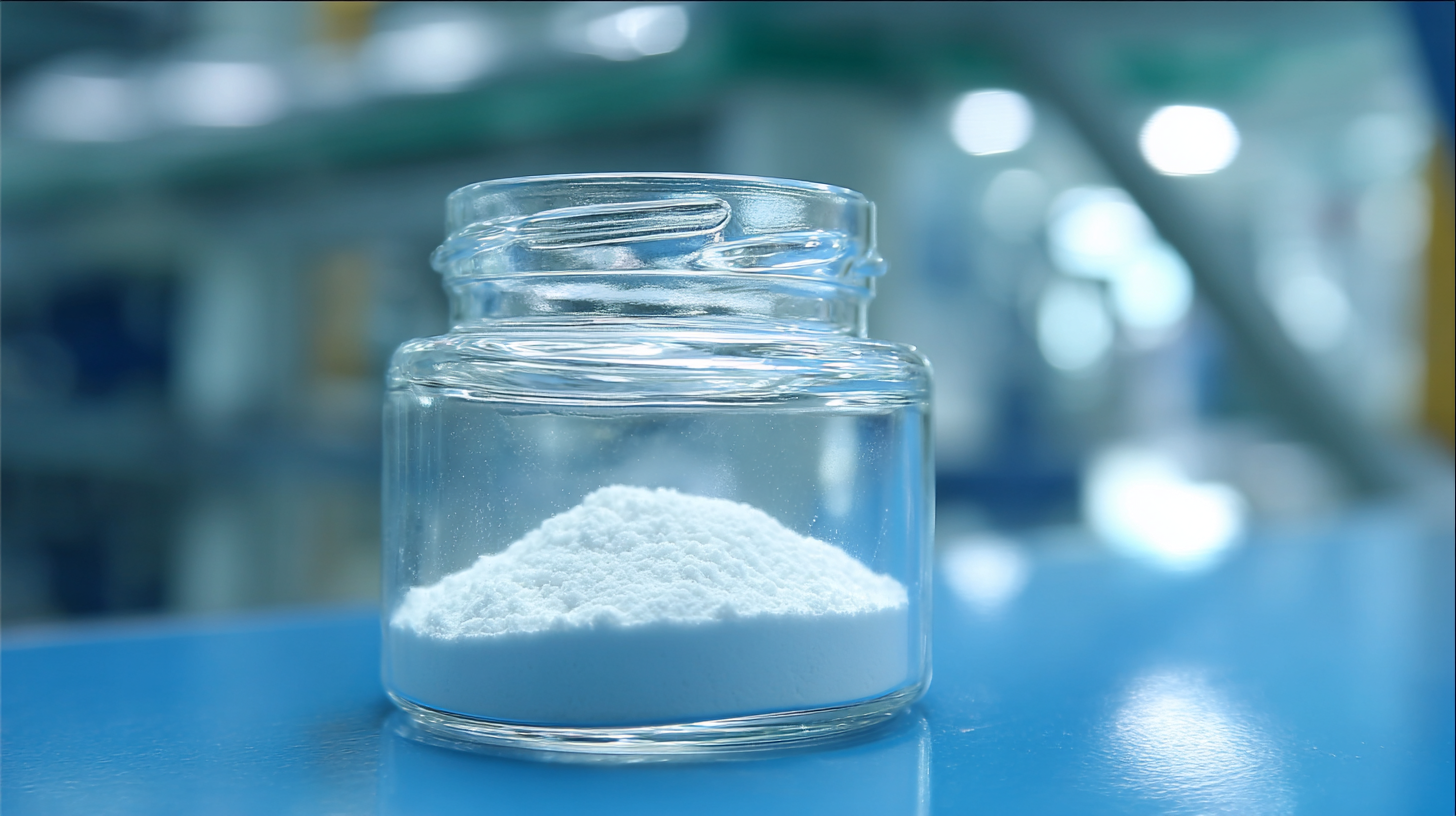
News
Mastering the Essentials of Best Tylosin Phosphate for Global Procurement Success
In recent years, the demand for Tylosin Phosphate has surged significantly, reflecting its vital role in the agricultural and pharmaceutical sectors. According to a report by Market Research Future, the global market for veterinary pharmaceuticals is expected to reach USD 8.63 billion by 2026, with Tylosin Phosphate being a key contributor due to its effectiveness in promoting growth and preventing disease in livestock. This potent antibiotic is extensively utilized in feed additives and has gained traction as a crucial ingredient for enhancing animal health and productivity.

As global procurement strategies evolve, understanding the essential applications and methods for Tylosin Phosphate becomes paramount for stakeholders aiming for success in this competitive market. This blog will delve into industry case studies highlighting the diverse applications of Tylosin Phosphate, as well as actionable strategies that can be employed to optimize its procurement on a global scale.
Key Factors Influencing Tylosin Phosphate Quality in Global Sourcing
In the competitive landscape of global sourcing, understanding the key factors that influence the quality of Tylosin Phosphate is essential for procurement success. Several industry reports indicate that the purity level of Tylosin Phosphate can vary significantly, with high-quality products achieving a purity of over 95%. This high standard is crucial for pharmaceutical applications and animal feed additives, as impurities can adversely affect health outcomes in livestock and the efficacy of veterinary treatments.
One significant factor affecting Tylosin Phosphate quality is the source of raw materials. Suppliers that maintain strict quality control measures and adhere to Good Manufacturing Practices (GMP) are more likely to deliver a product with consistent potency and purity. According to a recent market analysis, about 70% of procurement professionals emphasize the importance of supplier certifications as a criterion for sourcing quality Tylosin Phosphate.
**Tips for ensuring high-quality procurement include:**
1. **Conduct Supplier Audits:** Regular visits and evaluations can help verify that suppliers comply with required quality standards.
2. **Request Certificates of Analysis (CoA):** Always ask for CoAs to ensure that the product meets specified quality and purity benchmarks before making a purchase.
By focusing on these key factors and implementing diligent sourcing strategies, procurement teams can significantly enhance their chances of success in the global Tylosin Phosphate market.

Understanding Regulatory Compliance for Tylosin Phosphate Procurement
When procuring Tylosin Phosphate, understanding the regulatory compliance landscape is crucial for success in global markets.
 Tylosin Phosphate, an important antibiotic used primarily in veterinary medicine, is subject to stringent regulations across different countries. Each region has its own set of rules regarding its use, manufacturing, and distribution. Therefore, being well-versed in these regulations can significantly affect the efficiency of your procurement process. Companies must navigate through local regulations, international standards, and import/export requirements to ensure that they remain compliant throughout their supply chain.
Tylosin Phosphate, an important antibiotic used primarily in veterinary medicine, is subject to stringent regulations across different countries. Each region has its own set of rules regarding its use, manufacturing, and distribution. Therefore, being well-versed in these regulations can significantly affect the efficiency of your procurement process. Companies must navigate through local regulations, international standards, and import/export requirements to ensure that they remain compliant throughout their supply chain.
Moreover, anticipating regulatory changes can provide strategic advantages. As governments continue to tighten regulations around antibiotic use, particularly in agriculture, staying informed about these shifts is essential. This proactive approach not only mitigates risks associated with non-compliance but also allows businesses to adjust their procurement strategies accordingly. Understanding the nuances of regulatory frameworks will ultimately streamline operations and enhance the overall success of Tylosin Phosphate procurement on a global scale. By prioritizing compliance, companies can foster trust with stakeholders and secure their position in a competitive marketplace.
Assessing Supplier Reliability: Metrics and Best Practices in Tylosin Procurement
When procuring Tylosin phosphate, supplier reliability is paramount. As the global market expands, ensuring that your suppliers adhere to consistent quality and supply chain efficiency is crucial. Key metrics such as delivery times, product consistency, and regulatory compliance should be regularly assessed to ensure a robust procurement strategy. Implementing a scoring system for these metrics can help in selecting suppliers who not only meet current requirements but also grow with your business.
In addition to quantitative metrics, best practices in supplier relationships should not be overlooked. Establishing open communication channels fosters transparency and trust, enabling buyers to address potential issues proactively. Regular audits and feedback sessions can enhance supplier performance and alignment with your organization’s goals. By focusing on both metrics and relationship management, businesses can secure a reliable supply of Tylosin phosphate, ultimately contributing to their procurement success in a competitive global landscape.
Supplier Reliability in Tylosin Procurement
Cost-Benefit Analysis: Optimizing Your Tylosin Phosphate Purchasing Strategy
When it comes to optimizing your tylosin phosphate purchasing strategy, a thorough cost-benefit analysis is essential. This process begins with understanding the various cost components involved in procurement, including unit price, shipping fees, and storage costs. By evaluating these factors against the benefits of using tylosin phosphate—such as enhanced livestock health and improved productivity—buyers can make informed decisions that maximize their return on investment.
Moreover, establishing long-term relationships with suppliers can also lead to better pricing and reduced costs over time. Negotiating bulk purchase agreements or exploring alternative suppliers can provide leverage in securing more favorable terms. In this dynamic market, keeping a close eye on trends and pricing fluctuations will enable purchasers to act quickly and efficiently, ensuring they remain competitive and maintain profitability while leveraging the health benefits that tylosin phosphate brings to their operations.
Mastering the Essentials of Best Tylosin Phosphate for Global Procurement Success - Cost-Benefit Analysis: Optimizing Your Tylosin Phosphate Purchasing Strategy
| Supplier | Unit Cost ($/kg) | Minimum Order Quantity (kg) | Lead Time (days) | Shipping Cost ($) | Total Cost ($) |
|---|---|---|---|---|---|
| Supplier A | 50 | 100 | 15 | 200 | 5200 |
| Supplier B | 48 | 200 | 10 | 350 | 9800 |
| Supplier C | 52 | 150 | 20 | 400 | 8260 |
| Supplier D | 49 | 250 | 12 | 450 | 12300 |
| Supplier E | 47 | 120 | 8 | 300 | 5880 |
Market Trends and Demand Forecast for Tylosin Phosphate in Agriculture
The agricultural sector is witnessing a significant shift in the demand for
Tylosin Phosphate due to its essential role in enhancing livestock health and productivity.
As farmers and producers increasingly recognize the benefits of this antibiotic, the market is projected to experience growth in both production and consumption.
This trend highlights the need for agricultural stakeholders to stay abreast of developments related to Tylosin Phosphate,
as supply chain dynamics and regulations evolve.
Tip:
Engage with industry associations and research institutions to gain insights into the latest market trends and regulatory changes.
Staying informed will help you make better procurement decisions and navigate the complexities of sourcing Tylosin Phosphate.
Furthermore, the rising global demand for sustainable agricultural practices is driving innovations in Tylosin Phosphate applications.
With a focus on minimizing antibiotic resistance and promoting animal welfare, producers are looking for responsible sourcing solutions.
Being proactive in understanding market forecasts can empower procurement teams to negotiate better contracts and ensure a stable supply.
Tip:
Utilize predictive analytics to forecast demand shifts and adjust procurement strategies accordingly.
By anticipating market changes, you can optimize your purchasing processes and maintain advantageous supply relationships.





